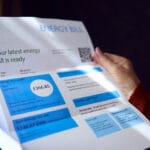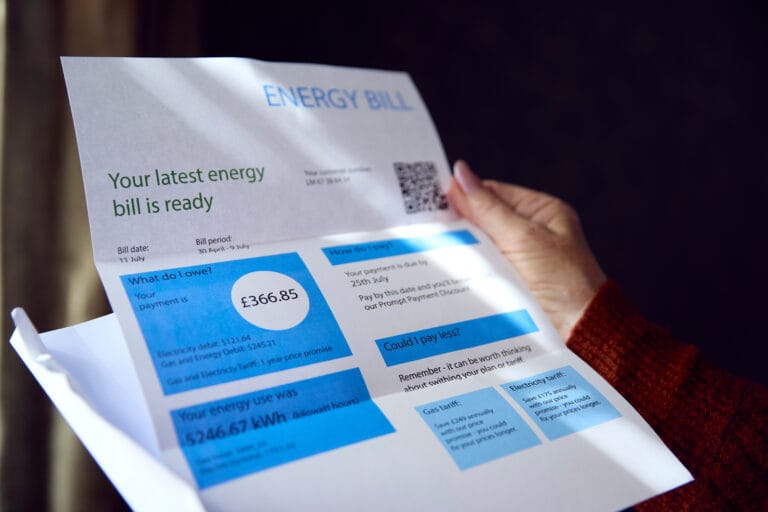Energy bills have been a major concern for UK households and businesses alike, with prices soaring over the past few years. But what’s driving these relentless increases? The numbers speak for themselves – natural gas prices are the biggest culprit.
According to recent research, spikes in gas prices have added an eye-watering £3,000 to the average UK energy bill since the beginning of the energy crisis in late 2021. That’s an average increase of £750 per year – roughly seven times the cost of investing in renewable energy. While gas prices continue to cause financial strain, renewables are proving to be the more affordable and stable solution.
So how are renewables helping to bring costs down? Let’s break it down.
The UK’s Gas Reliance: A Recipe for Soaring Bills
Despite the UK’s growing investment in renewable energy, natural gas remains the dominant force behind rising energy bills. The UK’s heavy reliance on gas for electricity generation and heating has left both families and businesses struggling with higher costs, as gas prices continue to be volatile. Wholesale energy costs have surged, with gas alone responsible for £1,800 of the £3,000 increase in energy bills.
Even though renewables are generating more of the UK’s electricity than ever before, gas power plants still dictate market prices. When gas prices spike, electricity bills follow suit. And the volatility isn’t going away—gas prices recently hit a two-year high, and while the energy price cap may offer some short-term relief, it’s expected to rise again. Experts argue that the UK remains dangerously underprepared for another gas crisis, making it clear that dependency on fossil fuels is a costly gamble.

Graph depicting the rise in energy prices between March 2024-March 2025 measured in USD/MMBtu (Metric Million British Thermal Unit), meaning; the cost in dollars per the amount of natural gas that would generate 1 million Btu of heat energy.
Beyond Gas: How Wind, Heat Pumps, and Insulation Can Lower Bills
Thankfully, there is a way to reduce reliance on volatile gas prices. Fixed-price wind farms provide a stable and predictable energy cost, shielding businesses and consumers from fluctuations in volatile gas prices by offering a consistent rate regardless of market spikes. Alongside this, the price of older renewable energy schemes are expected to fall further. By investing in homegrown renewable energy, you can provide yourself with a more stable and predictable alternative, reducing the financial strain on households caused by the volatility of gas prices.
Beyond renewables, insulating homes and accelerating the transition to heat pumps could further protect consumers from future energy price shocks. Strengthening the UK’s energy independence through clean power could not only lower costs but also enhance energy security, making the country less vulnerable to external market fluctuations. By prioritising these solutions, the UK can move towards a future where energy bills are no longer at the mercy of an unpredictable global market.
A Future of Affordable, Stable Energy
The UK’s dependence on gas has made energy bills unpredictable and costly, but there is a clear solution, investing in renewables. While gas prices continue to fluctuate, wind and solar power offer a stable, cost-effective alternative that is already driving down costs for consumers. The more the UK expands its renewable energy capacity, the less exposure households and businesses will have to volatile fossil fuel markets.
But the transition doesn’t stop with renewables. By improving home insulation and accelerating the adoption of heat pumps, the UK can further protect itself from future energy price shocks. Moving away from gas isn’t just about cutting costs—it’s about securing long-term energy stability and sustainability. The time to act is now, and the benefits of a cleaner, more resilient energy future are well within reach.















